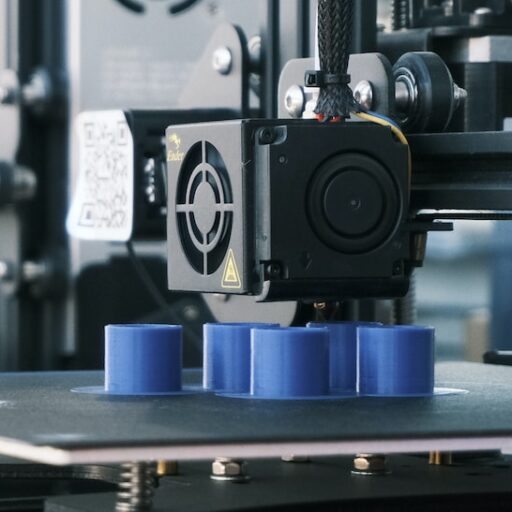Support our educational content for free when you purchase through links on our site. Learn more
Is 3D Printing a Good Thing? 7 Surprising Truths You Need to Know 🚀 (2025)
Imagine turning a digital idea into a physical object in just a few hours — no factories, no long waits, just pure creative magic at your fingertips. That’s the promise of 3D printing, a technology that’s reshaping everything from healthcare to home DIY projects. But is it really as good as everyone says? Or is there a catch hiding beneath those layers of plastic and resin?
In this deep dive, we’ll unravel 7 surprising truths about 3D printing that every curious maker, entrepreneur, or skeptic should know. From jaw-dropping benefits like custom prosthetics and aerospace parts to the frustrating realities of post-processing and material limits, we leave no stone unturned. Plus, we’ll peek into the future to see how 3D printing might just change the world — or at least your workshop.
Ready to find out if 3D printing is truly a good thing for you? Let’s get started!
Key Takeaways
- 3D printing accelerates innovation by enabling rapid prototyping and complex designs impossible with traditional methods.
- Customization is king — from personalized medical implants to bespoke gadgets, 3D printing delivers tailored solutions.
- Sustainability potential is real, thanks to reduced waste and localized production, but energy use varies by process.
- Limitations include material strength, size constraints, and a learning curve that beginners should expect.
- Industries transformed include healthcare, aerospace, automotive, fashion, and education.
- Hobbyists benefit greatly but must be ready for troubleshooting and post-processing work.
- The future holds exciting advances like bioprinting, multi-material printing, and AI integration.
Thinking about jumping into 3D printing? Check out popular beginner-friendly printers like the Prusa i3 MK3S+, Creality Ender 3 V2, or Anycubic Kobra Neo to start your journey!
Table of Contents
- ⚡️ Quick Tips and Facts About 3D Printing
- 🔍 The Evolution and Origins of 3D Printing Technology
- 1️⃣ What Are the Game-Changing Benefits of 3D Printing?
- 2️⃣ The Real Deal: Common Challenges and Limitations of 3D Printing
- 🌍 How 3D Printing Is Revolutionizing Industries from Healthcare to Aerospace
- 💡 Sustainability and 3D Printing: Eco-Friendly Innovation or Hype?
- 🛠️ DIY and Hobbyist 3D Printing: Is It Worth Your Time and Money?
- 🤖 The Future of 3D Printing: Trends, Predictions, and Mind-Blowing Possibilities
- 🧐 What’s the Verdict? Is 3D Printing a Good Thing for Everyone?
- 🎯 Conclusion: Wrapping Up the 3D Printing Debate
- 🔗 Recommended Links for 3D Printing Enthusiasts
- ❓ Frequently Asked Questions About 3D Printing
- 📚 Reference Links and Further Reading
⚡️ Quick Tips and Facts About 3D Printing
If you’re new here, welcome to the fascinating world of 3D printing! Before we dive deep, here’s a quick cheat sheet from your pals at 3D Printed™ to get you started on whether 3D printing is a good thing:
- 3D printing = additive manufacturing: builds objects layer by layer from digital models. (Learn more about What is the meaning of 3D printed?)
- Rapid prototyping: turn ideas into physical objects in hours or days, not weeks.
- Customization king: tailor-made parts, prosthetics, or gadgets on demand.
- Material variety: plastics (PLA, ABS), metals (titanium, aluminum), resins, ceramics.
- Eco-friendly potential: less waste, local production, and biodegradable filaments.
- Limitations: size constraints, post-processing, material strength, and sometimes steep learning curves.
- Popular brands: Prusa, Creality, Anycubic, Raise3D, Ultimaker.
- Common software: Ultimaker Cura, PrusaSlicer, Simplify3D.
- Hobbyist vs Industrial: from desktop printers for fun to massive machines for aerospace parts.
Want to geek out on more facts and tips? Stick around — we’re unpacking all the juicy details with stories, stats, and real-world insights.
🔍 The Evolution and Origins of 3D Printing Technology
3D printing isn’t some sci-fi magic; it’s a technology with roots stretching back to the 1980s. Chuck Hull invented stereolithography (SLA) in 1983, the first method to create objects layer by layer using UV light to cure resin. Since then, the tech has exploded into multiple methods:
- Fused Deposition Modeling (FDM): Melts and extrudes plastic filament — the most common for hobbyists.
- Selective Laser Sintering (SLS): Uses lasers to fuse powdered materials, great for industrial parts.
- Digital Light Processing (DLP): Similar to SLA but uses a projector for faster curing.
The rise of open-source projects like the RepRap printer in 2005 democratized access, sparking a global maker movement. Today, 3D printing spans from DIY enthusiasts printing toys to NASA printing rocket parts in space! 🚀
For a deep dive into the history, check out this timeline from 3D Printing Industry.
1️⃣ What Are the Game-Changing Benefits of 3D Printing?
Rapid Prototyping: From Idea to Reality in a Snap
One of the biggest perks? Speed. Instead of waiting weeks for a prototype, you can print it in hours. This accelerates design iterations and testing, saving time and money. For example, automotive companies like Ford use 3D printing to test parts quickly before mass production.
Customization and Personalization
Forget one-size-fits-all. 3D printing lets you create bespoke items — from custom-fit hearing aids to personalized phone cases. Medical prosthetics are a shining example, tailored perfectly to each patient’s anatomy.
Complex Geometries Made Easy
Traditional manufacturing struggles with intricate internal structures, but 3D printing thrives here. Think lattice structures that reduce weight without sacrificing strength — a game-changer for aerospace and sports equipment.
Cost Efficiency and Waste Reduction
3D printing uses only the material needed, drastically cutting waste compared to subtractive methods like CNC machining. Plus, it reduces inventory costs by enabling on-demand production — no more warehouse full of unsold parts.
Accessibility and Democratization
Affordable desktop printers like the Creality Ender 3 or Anycubic Kobra Neo have put 3D printing in the hands of hobbyists, educators, and small businesses. Software like Ultimaker Cura is free and user-friendly, lowering barriers to entry.
2️⃣ The Real Deal: Common Challenges and Limitations of 3D Printing
Material Limitations and Mechanical Properties
Not all materials are created equal. While PLA is easy to print, it’s brittle and not heat-resistant. Metals and advanced composites require expensive industrial printers. This limits 3D printing’s use for some high-stress applications.
Size Constraints and Build Volume
Most desktop printers max out around 300x300x300 mm. Larger parts require assembly, which can compromise strength and aesthetics. Industrial printers can be massive but come with hefty price tags.
Post-Processing: The Hidden Time Sink
3D prints often need supports removed, sanding, or chemical smoothing. This adds time and effort, especially for resin prints that require curing and washing. It’s not always “print and go.”
Accuracy and Surface Finish
Layer lines are visible on many FDM prints, and tolerances can vary. For ultra-precise parts, CNC machining or injection molding might still be better.
Learning Curve and Troubleshooting
3D printing isn’t plug-and-play. Issues like warping, clogging, or adhesion failures are common. The Reddit community (r/3Dprinting) is a goldmine for troubleshooting, but beginners should expect some trial and error.
🌍 How 3D Printing Is Revolutionizing Industries from Healthcare to Aerospace
Healthcare: Personalized Medicine and Prosthetics
3D printing enables custom implants, surgical guides, and even bioprinting tissues. Companies like Organovo are pioneering printed organs for research. Prosthetics tailored to patients’ needs improve comfort and mobility.
Aerospace: Lightweight and Complex Parts
Airbus and Boeing use 3D printing to produce lightweight brackets and engine components, reducing aircraft weight and fuel consumption. The ability to print complex geometries also shortens development cycles.
Automotive: Rapid Development and Spare Parts
From concept cars to replacement parts, 3D printing accelerates design and reduces inventory. Tesla reportedly uses 3D printing for prototype parts and tooling.
Fashion and Jewelry: Custom Designs and Small Batches
Designers use 3D printing to create intricate jewelry and bespoke fashion pieces impossible with traditional methods. It’s a playground for creativity and rapid iteration.
Education and Research
Schools and universities use 3D printers to teach STEM concepts and prototype research projects. It’s an engaging hands-on tool that bridges theory and practice.
Explore more about industry innovations in our 3D Printing Innovations category.
Sustainability and 3D Printing: Eco-Friendly Innovation or Hype?
Material Waste Reduction
Unlike subtractive manufacturing, 3D printing only uses the material needed, minimizing scrap. For example, PLA is biodegradable and made from renewable resources like corn starch.
Localized Production Cuts Carbon Footprint
Printing parts on-site or nearby reduces transportation emissions. This is a big plus for supply chain sustainability.
Energy Consumption: A Mixed Bag
3D printers consume electricity, and some processes (like metal sintering) are energy-intensive. The overall environmental impact depends on the application and scale.
Recycling and Reuse
Some filament brands like Filabot offer recycled PLA filaments. However, recycling 3D printed parts is still a developing area.
The Verdict on Green Credentials
3D printing has genuine sustainability potential but isn’t a silver bullet. It’s best combined with smart design and responsible material choices.
🛠️ DIY and Hobbyist 3D Printing: Is It Worth Your Time and Money?
Getting Started: What You Need to Know
If you’re eyeing a printer for home use, expect a learning curve. We recommend starting with reliable models like the Prusa i3 MK3S+ or Creality Ender 3 V2 for a balance of quality and affordability.
Common Uses for Hobbyists
- Replacement parts for household items
- Custom tools and jigs
- Artistic sculptures and cosplay props
- Educational models and prototypes
Success Stories from the Community
One of our team members printed a custom mount adapter for a drone, saving hundreds of dollars and weeks of waiting. Another printed food bag sealing clips (STLs available on Thingiverse) — a simple but handy hack!
Challenges to Brace For
- Calibration and bed leveling can be frustrating.
- Print failures happen — patience is key.
- Post-processing takes time.
- Resin printers offer finer detail but require safety precautions.
Software and Design
Learning basic CAD with free tools like Tinkercad or Fusion 360 can unlock endless possibilities. Check out our 3D Design Software category for guides and tutorials.
🤖 The Future of 3D Printing: Trends, Predictions, and Mind-Blowing Possibilities
Bioprinting: Printing Organs and Tissues
The holy grail of 3D printing is functional organ printing. While still experimental, companies like CELLINK and Organovo are making strides toward transplantable tissues.
Multi-Material and Color Printing
Next-gen printers will combine materials (flexible, rigid, conductive) and print in full color, opening new doors for prototyping and art.
Large-Scale Printing: Houses and Vehicles
3D-printed homes are already a reality, with companies like ICON building affordable, sustainable housing. The automotive industry is exploring printed chassis and body parts.
AI and Automation Integration
AI-driven slicing and print monitoring will reduce failures and optimize prints. Remote monitoring tools, like cameras and sensors, are becoming standard.
Supply Chain Transformation
On-demand printing could disrupt traditional manufacturing and logistics, reducing waste and speeding up delivery.
Stay ahead of the curve with our 3D Printing Innovations category.
🧐 What’s the Verdict? Is 3D Printing a Good Thing for Everyone?
The Pros: Why We’re Excited
✅ Empowers creativity and innovation
✅ Enables rapid prototyping and customization
✅ Reduces waste and supports sustainability
✅ Democratizes manufacturing
✅ Transforms industries from healthcare to aerospace
The Cons: What to Watch Out For
❌ Not a one-size-fits-all solution
❌ Material and size limitations
❌ Requires patience and learning
❌ Post-processing can be tedious
❌ Initial investment and maintenance costs
Who Benefits Most?
- Designers and engineers needing fast prototypes
- Medical professionals for custom implants
- Educators and students for hands-on learning
- Hobbyists and makers with a passion for DIY
- Small businesses and startups for low-volume production
Who Might Struggle?
- Users expecting plug-and-play perfection
- Applications requiring ultra-high strength or precision
- Those unwilling to invest time in learning and troubleshooting
Our Take at 3D Printed™
We believe 3D printing is a fantastic tool with incredible potential, but it’s not magic. It shines brightest when paired with creativity, patience, and the right application. If you’re curious and willing to learn, it’s absolutely worth exploring!
🎯 Conclusion: Wrapping Up the 3D Printing Debate

So, is 3D printing a good thing? After unpacking the history, benefits, challenges, and future possibilities, we at 3D Printed™ confidently say: Yes, but with some caveats.
3D printing is a revolutionary technology that empowers creativity, accelerates prototyping, and enables customization like never before. It’s transforming industries from healthcare to aerospace, making manufacturing more accessible and sustainable. Plus, the joy of printing your own custom parts or gadgets? Priceless.
However, it’s not a magic wand. Material limitations, size constraints, and the need for post-processing mean it’s not perfect for every application. Beginners should expect a learning curve and occasional print failures. But hey, that’s part of the fun and growth!
If you’re a hobbyist or professional ready to embrace the quirks and rewards, 3D printing is absolutely worth your time and investment. Start with reliable printers like the Prusa i3 MK3S+ or Creality Ender 3 V2, and explore the vast world of 3D printable objects to fuel your passion.
Remember the food bag clips and emergency whistles we mentioned earlier? Those are just the tip of the iceberg. The possibilities are as limitless as your imagination.
Ready to dive in? Let’s print the future together! 🚀
🔗 Recommended Links for 3D Printing Enthusiasts
👉 Shop Popular 3D Printers and Accessories:
- Prusa i3 MK3S+: Thingiverse | Prusa Official Website | Amazon
- Creality Ender 3 V2: Thingiverse | Creality Official Website | Amazon
- Anycubic Kobra Neo: Thingiverse | Anycubic Official Website | Amazon
Recommended Books on 3D Printing:
- 3D Printing: The Next Industrial Revolution by Christopher Barnatt — Amazon
- Fabricated: The New World of 3D Printing by Hod Lipson and Melba Kurman — Amazon
- 3D Printing For Dummies by Kalani Kirk Hausman and Richard Horne — Amazon
❓ Frequently Asked Questions About 3D Printing
What are the benefits of 3D printing for the environment?
3D printing reduces waste by using only the material necessary to build an object, unlike traditional subtractive manufacturing that cuts away excess material. Additionally, it enables localized production, which cuts down on transportation emissions. Using biodegradable filaments like PLA, made from renewable resources, further enhances its eco-friendliness. However, energy consumption varies by printer type and material, so it’s important to consider the full lifecycle impact.
How is 3D printing changing the manufacturing industry?
3D printing is shifting manufacturing from mass production to mass customization. It allows companies to rapidly prototype, iterate, and produce complex parts that were previously impossible or too costly. This reduces inventory needs and shortens supply chains. Industries like aerospace, automotive, and healthcare benefit from lightweight, tailored components and faster development cycles.
What are some of the most useful items to 3D print for everyday life?
Everyday useful prints include:
- Replacement parts for appliances or gadgets (e.g., knobs, clips)
- Custom phone holders and mounts
- Kitchen tools like bag sealing clips or measuring spoons
- Organizational aids such as cable holders or drawer dividers
- Emergency tools like whistles or multi-tools
These items save money, reduce waste, and add convenience.
Can 3D printing help reduce waste and promote sustainability?
Absolutely! By printing on demand, 3D printing eliminates overproduction and excess inventory. The additive process minimizes scrap material. Plus, the rise of recycled and biodegradable filaments supports circular economy principles. However, sustainability depends on responsible design, material choice, and energy use.
How difficult is it to get started with 3D printing as a hobbyist?
Starting requires patience and willingness to learn. You’ll need to understand printer calibration, slicing software, and troubleshooting common issues like warping or adhesion failures. Community resources like r/3Dprinting and tutorials on platforms like YouTube are invaluable. Choosing a beginner-friendly printer like the Creality Ender 3 V2 helps smooth the learning curve.
What software do I need to design and print 3D models?
Popular free slicers include Ultimaker Cura and PrusaSlicer, which convert 3D models into printer instructions. For designing models, beginners often start with Tinkercad (web-based and user-friendly), while more advanced users prefer Fusion 360 or Blender. Our 3D Design Software category has detailed guides.
📚 Reference Links and Further Reading
- Raise3D’s comprehensive guide on Advantages of 3D Printing
- Reddit’s r/3Dprinting wiki for troubleshooting and community advice
- CGICoffee’s honest review: 3D Printers Are Awesome! Or — What Is a 3D Printer Actually Good For?
- Prusa Research official site: Prusa i3 MK3S+
- Creality official website: Creality Ender 3 V2
- Anycubic official website: Anycubic Kobra Neo
Ready to start your 3D printing adventure? Check out our 3D Printer Reviews and 3D Printable Objects for inspiration and guidance!





